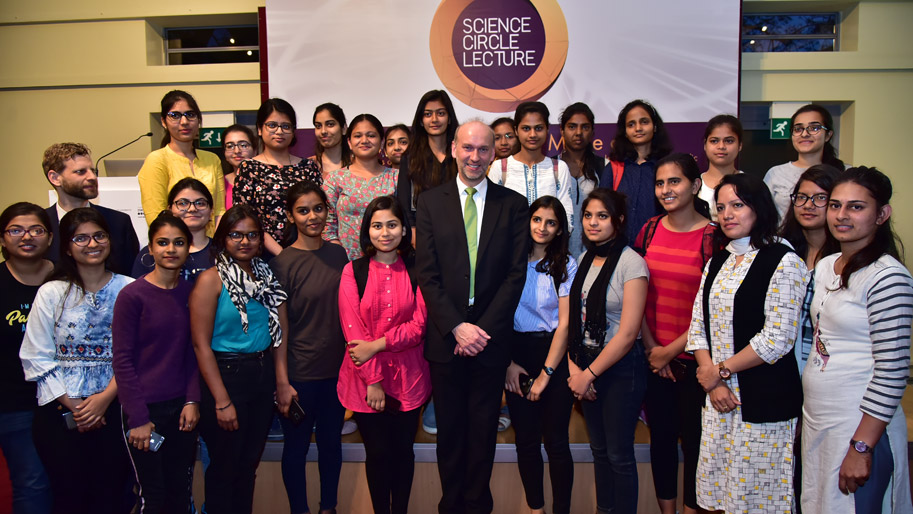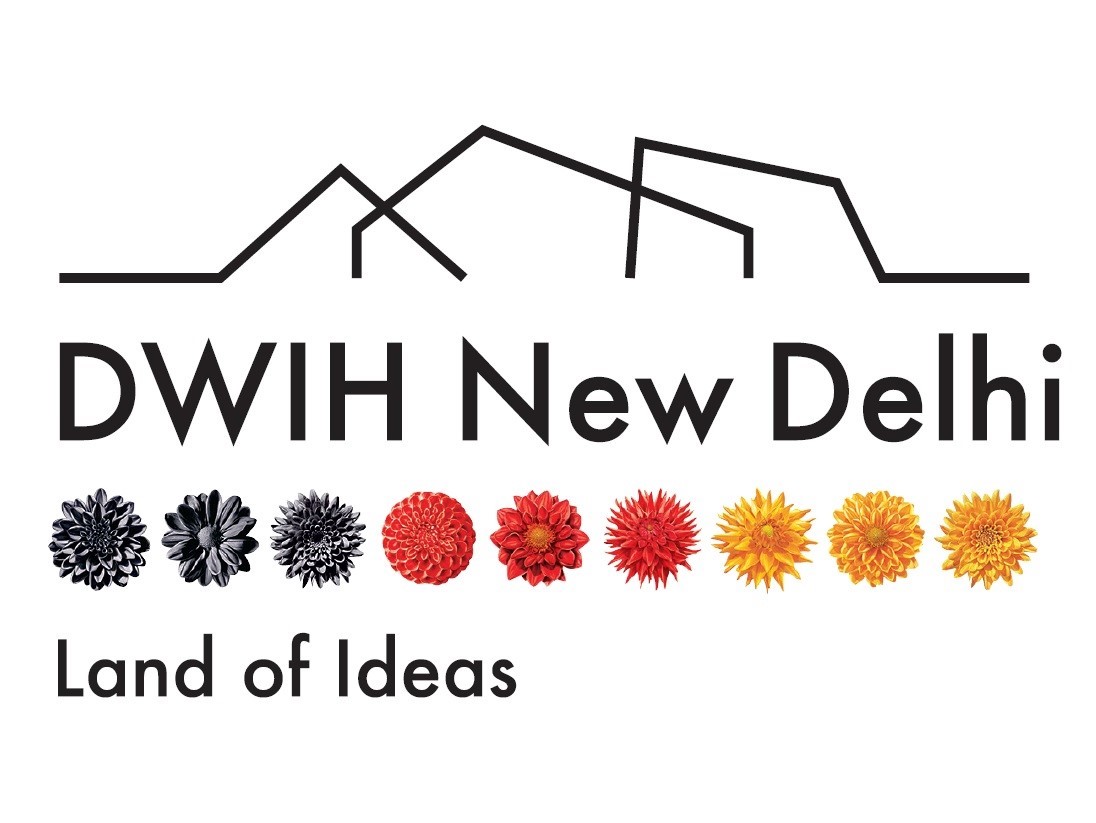Science Circle Lecture: What the World is Made Of – From the Latest Results of the Large Hadron Collider at CERN to Physics Outreach for Schools
 © DWIH New Delhi
© DWIH New Delhi
“What is the world made of?” Can you think of an answer to this mind – boggling question? The world could be made of any and everything that we see, touch, hear, taste, smell and perceive. Right?
But could it also be made of things that only come to light under a microscope? Could it be made up of tonnes of particles, an interaction of matter and energy in space – time, which goes on right around us, without being visible to us?
To demystify this puzzle, The German Centre for Research and Innovation – DWIH New Delhi, with the support of the Embassy of the Federal Republic in Germany and the Georg – August Universität Göttingen, organized a Science Circle Lecture on the theme: What the World is Made Of – From the Latest Results of the Large Hadron Collider at CERN to Physics Outreach for Schools.
Prof Dr Arnulf Quadt from the Georg – August Universität Göttingen delivered the talk, which saw a large number of students, from both schools and colleges in attendance, a milestone for DWIH New Delhi’s efforts at promoting Science, Research and Development among the youth.
The primary focus of the lecture was on the results of the Atlas Detector, a general purpose detector at the Large Hadron Collider (LHC) at CERN, Geneva, Switzerland. The Atlas Detector is responsible for exploration and identification of different particles that make up our universe, including the now famous Higgs Boson.
As per CERN website: “Beams of particles from the LHC collide at the centre of the ATLAS detector making collision debris in the form of new particles, which fly out from the collision point in all directions. Six different detecting subsystems arranged in layers around the collision point record the paths, momentum, and energy of the particles, allowing them to be individually identified. A huge magnet system bends the paths of charged particles so that their momenta can be measured.
The interactions in the ATLAS detectors create an enormous flow of data. To digest the data, ATLAS uses an advanced “trigger” system to tell the detector which events to record and which to ignore. Complex data-acquisition and computing systems are then used to analyze the collision events recorded. At 46 m long, 25 m high and 25 m wide, the 7000-tonne ATLAS detector is the largest volume particle detector ever constructed.”
The next part of the talk introduced some big questions, to which answers are yet to be found by scientists, including the presence of dark matter, matter – antimatter symmetry, particle mass and strength of gravity etc.
Towards the end, Prof Dr Quark explained the ongoing events at CERN, where the LHC is currently undergoing repairs and upgrades as a part of the two- year shutdown phase, a precursor to the complete shutdown scheduled in 2024 for replacement of its inner tracker, for which the Georg – August Universität Göttingen is currently building parts.
The lecture concluded with the introduction to an interesting programme called “Physics in Advent” for school kids to experience physics and its applications in real life through online experiments. For more, please refer to https://www.physics-in-advent.org/.
Date: 26th March 2019
Venue: Embassy of the Federal Republic of Germany, New Delhi
